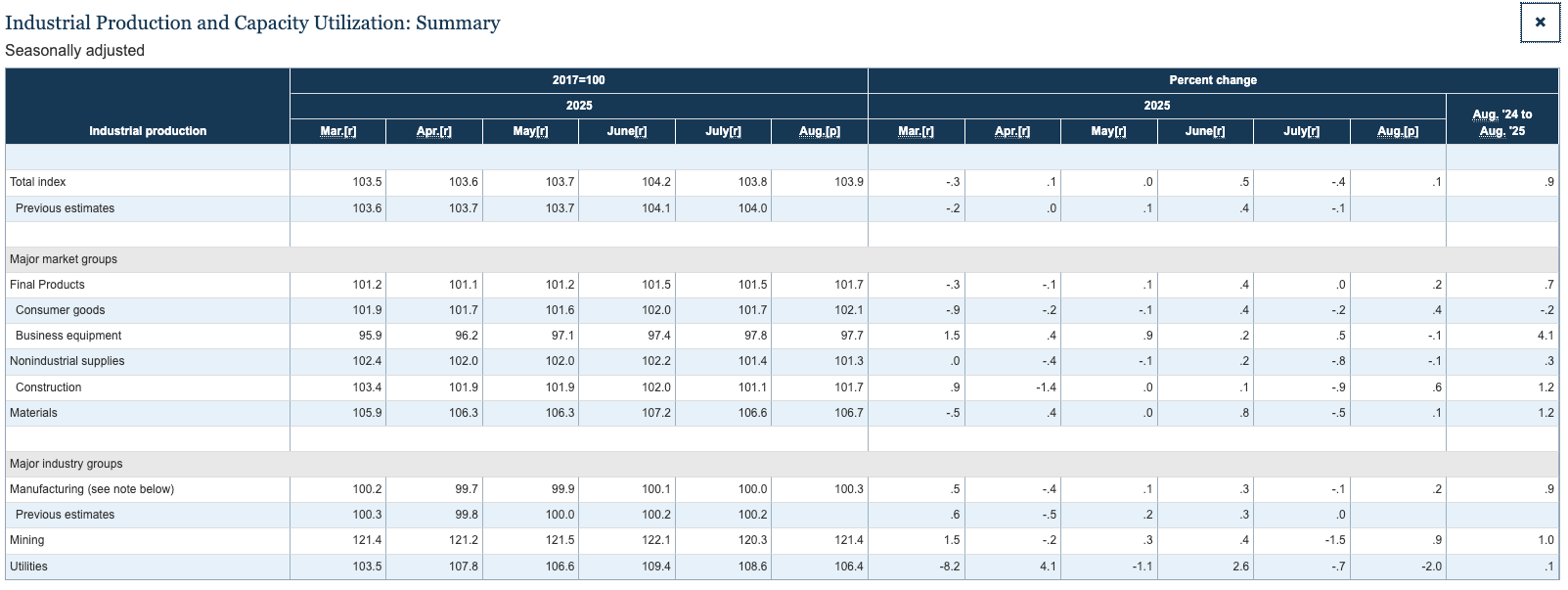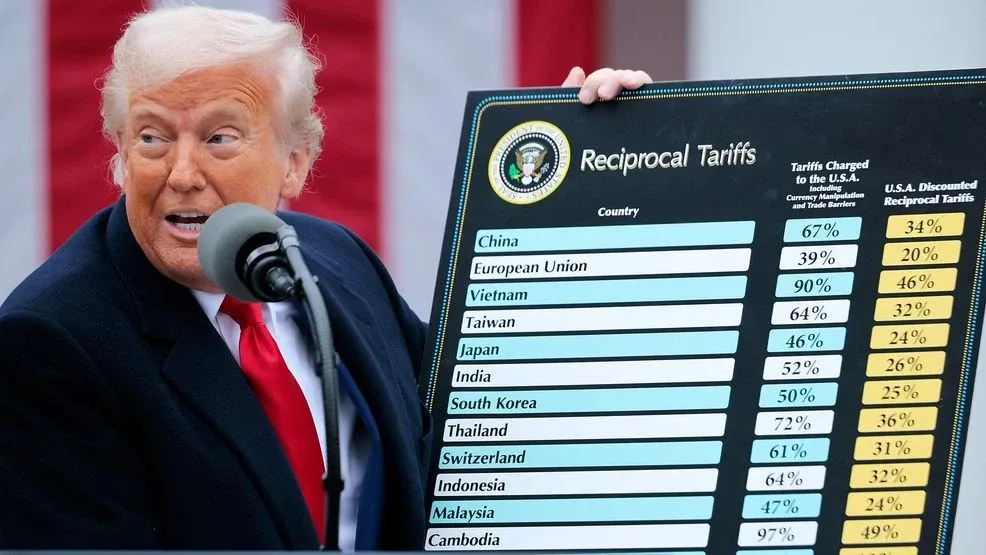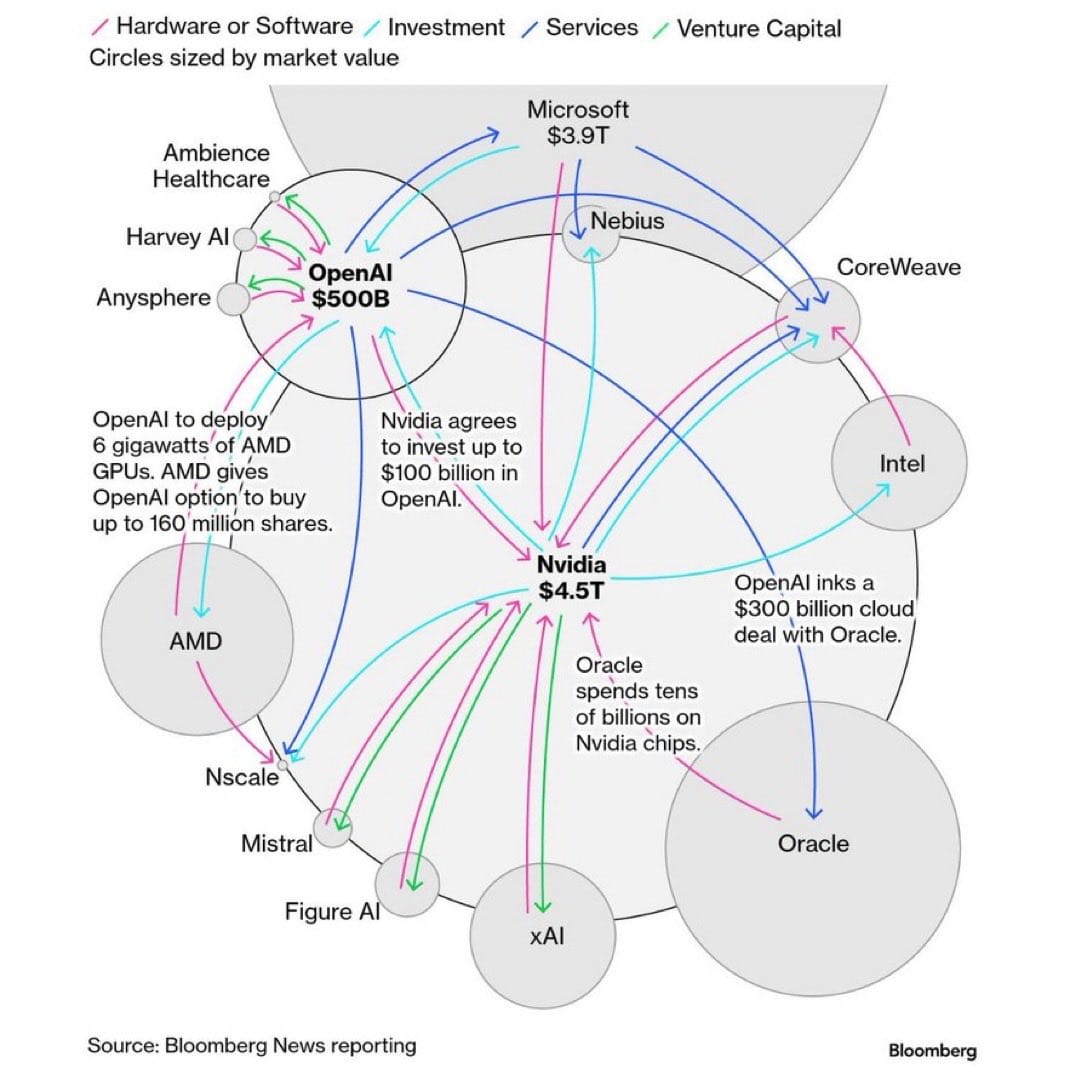Due Dilly Episode 3 is out if you haven't seen it yet. Catch it on YouTube or wherever you listen to podcasts.
When deciding to move The Dime💰 to the Due Dilly site, I decided to take a completely different approach to writing. Firstly, I wanted to write in a more stately manner because the platform was different. I felt that writing on Instagram required a bit more of a relaxed style, something that felt like speaking on the living room couch with a friend, but since Instagram is a social media platform it fit well for that. On a formal website, and as a formal email newsletter, it would need to be something more refined. Something more respectable for the inbox.
Secondly, I wanted to dedicate more time to talking about the law. Primarily because most do not cover it and it actually affects you every single day, but also because I felt like it would be a way for you to be able to speak to the things that matter to you in a comfortable way. I aim to continue keeping that mission, but today, we are taking a trip back to how things used to be on Instagram. It is only this week, because the message this week is a very important one.
We are experiencing a vibe shift. A very important one. It is going to affect all of us. It is going to be very weird. It is going to be very confusing. You are going to need to be prepared.
— CJB, Esq. (@CJoeBlack) November 14, 2025
Where We Started
November 2024 was the previous vibe shift. Donald Trump had a decisive victory in the Electoral College and beat Kamala Harris by more than two million votes. Millions of Democrats stayed home. It was not even close. The Right decisively won the culture war. Young men overwhelmingly voted Republican. The right wing of Silicon Valley took control of the corporate side of politics and kicked off January 2025 with pro tech, pro crypto, policy and a wave of effective accelerationism rhetoric that swept social media and in many ways traditional media as well.
For a while, that energy carried the year. The mood of the internet tilted in one direction. The CEOs, the influencers, the founders, the traders, the content creators, all spoke the same language and you could feel it in the air. Companies bent the knee, donated money, gave Trump a bunch of praises, attended dinners, and cancelled DEI programs/initiatives. Democrats spent most of the year languishing. But 11 months later, the vibe has shifted again. Before we talk about where the vibe is going, we need to talk about how the vibe shifted slowly, then all at once.
Trump’s Promises
Donald Trump has broken every single one of his promises to his voters. Literally, every single one. The people who voted for him in November 2024 did so because they believed they were signing up for a particular vision of America. What they got instead was something that contradicted the very language of the campaign.
Let’s get into each.
No more wars
The promise of disengagement evaporated by March 2025. After the January 12 attack on U.S. personnel in northern Iraq, the administration authorized targeted air operations that evolved into sustained involvement by April. Troop deployments increased. Contractors increased. The Middle East did not calm down. It escalated. We dropped a huge bomb on Iran using B-2 Stealth Bombers "killing" their nuclear program. Ukraine is still at war with Russia. The Gaza ceasefire is probably the only major thing we can say “happened” but it’s too early to tell if that will really hold.
America First
Earlier this year the under-currents around the H‑1B visa program began to boil over, and as of last week they have burst into full view. On November 11, 2025, Donald Trump told an interviewer on Fox News that while America is “leading China by a lot on AI,” the United States “doesn’t have a certain talent” and therefore needs to bring in foreign skilled workers under H-1B visas. He also stated that he'd be allowing 600,000 students from China to attend universities in the US, which his voters view as taking US seats.
The timing is significant. In September 2025 President Trump signed a proclamation imposing a $100,000 fee on each new H-1B visa application, effective September 21, 2025, a move framed as protecting American jobs and training U.S. workers.
That fee, and the broader scrutiny of H-1B, exposed deep fractures in the Republican coalition and in the tech economy. On one flank you have business and tech leaders arguing that foreign talent is essential to innovation, especially in AI and advanced engineering. On the other you have nationalist and “America First” voters furious at any program seen as displacing domestic workers or suppressing wages.
The “debacle” lies in the contradiction. On one hand federal policy is tightening access (the six-figure fee). On the other hand the president is acknowledging talent shortage and endorsing foreign-skilled workers to keep competitive. The result is confusion among employers, prospective immigrants, and U.S.-born workers alike.
For startups this matters. When the cost of hiring international talent skyrockets, and the political risk of using H-1Bs rises, that changes how you plan for hiring, how you price labor, how you assess VC backers who count on global talent. Meanwhile domestic workers who were promised protection feel betrayed when talent shortage becomes the justification for foreign hiring.
In short, the H-1B issue is not just about immigration. It is a symbol of the broader vibe shift: the promise of “America First, jobs for Americans” running headlong into the reality of “global talent, global competition.” The mismatch is now raw and visible.
Return of Manufacturing Jobs

Manufacturing output has barely grown over the last year and has dipped in several quarters. The new tariffs raised input costs for American factories. Plants in Ohio, Indiana, and Pennsylvania announced layoffs between June and August. The administration responded by saying the “adjustment period” would take time. Nothing real improvement so far.
Repeal of Obamacare
The House could not agree on a replacement bill by July. The administration quietly stopped talking about it. The promise died in committee.
Lower food prices
The combination of tariffs on fertilizers, energy price volatility, and supply chain disruptions has inflation at 3.2% by August 2025 when it probably would have already reached the Fed's 2% goal if the tariffs never happened.. The average grocery bill is higher today than it was under President Biden.
Lower home prices
Home prices continued to climb because supply is historically low. Adding tariffs on Canadian lumber raised construction costs, not lowered them. Housing prices are still high and are barely moving lower.
Lower interest rates
The Federal Reserve raised rates in March 2025 precisely because the tariff induced inflation spike made financial conditions worse. The White House blamed the Fed. The Fed blamed fiscal policy. Voters blamed Trump. The Fed eventually lowered rates (twice this year) but only by 50 basis points so far (.50%). So we're not seeing significant changes from that.
Epstein Files
He said he'd expose them. Hasn't happened yet.
— CJB, Esq. (@CJoeBlack) November 13, 2025
Nearly every major promise made to the coalition that elected him has not been met. That is the root of the vibe shift.
Here’s the Timeline of What Actually Caused the Vibe Shift
Below is how the energy changed, month by month, and why everyone suddenly feels like the air is different.
January 2025 – Tariffs Announced
The administration launched a 20 percent tariff on all Chinese imports on January 8, followed by sector specific tariffs over the next two weeks. Markets dipped. Retailers panicked. The public was confused. This was the first crack in the energy.
The online conversation shifted. TikTok creators who had been loudly pro tariff in theory suddenly realized how much of their lives depended on Chinese manufacturing in practice. By the end of January, even conservative influencers were complaining about the price of everything from microphones to gym equipment.
By April Trump slapped a tariff on damn near everyone. He even slapped a tariff on a country populated by penguins and did so on a chart that look like it was all calculated on ChatGPT

Spring – Cluely & Venture Capital
If tariffs were the policy signal, Cluely was the culture signal.
Cluely is an AI desktop assistant that sees your screen and hears your audio, then feeds you real time suggestions for what to say in interviews, sales calls, meetings, even dates. The founders describe it openly as a way to “cheat on everything,” and they built a whole brand around that idea.
In July, Cluely’s 21 year old CEO and his cofounders were profiled for throwing a $1.5 million rave as a launch stunt, leaning into a fratty, transgressive image. Around the same time, reports highlighted how the product can help users fake expertise in live settings, whispering answers in job interviews, technical screenings, or sales calls, with little concern for what that does to trust in the process.
The important part is not just that Cluely exists. The important part is who funded it. A16z led a $15 Million Series A round for a product that is literally branded as “cheating,” with a manifesto that proudly reframes cheating as “just another tool,” the same way calculators and Google were once framed.
That is the vibe shift in venture capital.
For most of the last decade, the ideal founder archetype was either the deeply technical domain expert, or the obsessive operator with a track record and a reputation for integrity. You did not have to be a saint, but investors at least pretended to care about whether you were building something durable, legal, and aligned with your users.
What we are seeing now is different. Capital is chasing whatever is loudest online. If a product can go viral on TikTok, if it can produce screenshots that travel on X, if it can generate enough controversy to keep the engagement flywheel spinning, that alone becomes a reason to wire the money.
Cluely is not the only example, but it is a clean one. Young founders. A deliberately provocative brand. A tool that openly undermines trust in hiring and sales. And big name venture capital backing it anyway, not in spite of that, but partly because of it.
The lesson for the wider culture is simple. The money is no longer rewarding only expertise and integrity. It is rewarding attention. This has lead to incessant rage baiting and a true question into whether building technology still has a pure purpose. To the point where there are wars on X between anonymous accounts and prominent venture capitalists like Marc Andreessen and other institutions like Y-Combinator.

Don’t mock the pope
— Daniel (@growing_daniel) November 8, 2025
The AI Arms Race That No One Understands
While tariffs and culture wars were playing out on the surface, something much bigger was happening in the background.
From January to now, the entire AI industry has turned into a circular funding diagram. The same handful of companies keep investing in each other, signing enormous infrastructure contracts, and talking about artificial general intelligence like it is right around the corner, while regular people mostly see higher electric bills and headlines about layoffs.
Let us walk through what actually happened.
January – Stargate and the Mega Data Centers
In January, the Trump administration stood up with OpenAI, Oracle, and SoftBank to announce “Stargate,” a $500 billion initiative to build a massive network of AI data centers across the United States.
The pitch was national greatness and technological dominance. The fine print was ten gigawatts of new data center capacity and hundreds of billions of dollars in long term commitments between OpenAI and its infrastructure partners. By the fall, OpenAI, Oracle, and SoftBank were announcing specific Stargate sites in Michigan, Wisconsin, Texas, and other states.
On top of that, analyses now estimate that OpenAI has committed to more than $1 trillion of hardware and cloud spending between 2025 and 2035, spread across vendors like Broadcom, Oracle, Microsoft, Nvidia, AMD, AWS, and CoreWeave.
So before you even get to the models, the core story is that AI has become a giant capital expenditure machine.
Spring – Everyone Invests in Everyone

The money did not stop with Stargate.
OpenAI continued raising equity at enormous valuations, with Thrive Capital, SoftBank, Nvidia, Microsoft, Fidelity, and Khosla Ventures all either leading or participating in recent rounds that pushed the company’s valuation well north of $150 billion and set the stage for even more capital this year.
Apple deepened its partnership with OpenAI, integrating ChatGPT into Apple Intelligence and iOS, and quietly positioning OpenAI as one of several model providers that will live in the Apple ecosystem. Oracle signed a cloud contract with OpenAI that is expected to total around $300 billion in compute over several years, making it one of the largest cloud deals in history. CoreWeave extended its own relationship with OpenAI through a new $6.5 billion contract, taking the total value of its OpenAI deals above $22 billion this year.
At the same time, the other AI players were not sitting still. Meta spent about $15 billion to buy a 49% percent stake in Scale AI, effectively pulling a major data labeling company into its orbit to feed its own models. Anthropic announced plans to invest roughly $50 billion in U.S. AI infrastructure, starting with custom data centers in Texas and New York. Google signed expensive licensing deals and made bets on code generation startups, while pushing its own Gemini models into every product it can.
The result is an industry where the same names show up in every cap table and every cloud contract. Firms that sell chips invest in firms that buy chips. Cloud providers invest in model labs that in turn commit to buying billions of dollars of compute from the same cloud providers. Investors who already hold equity in OpenAI then fund the companies that build the infrastructure OpenAI needs, and those infrastructure companies sign long term deals with Nvidia, which itself holds stakes in multiple cloud providers.

To the average person, it feels less like a clean market and more like an enclosed financial ecosystem. These deals have been driving the market this year. Most of the other companies are yelling "AI" in their earnings calls. Everyone's life is hitched on OpenAI.
Sora, Sora 2, and the Confusion About Value
When OpenAI first emerged, a lot of the public rhetoric was about curing diseases, accelerating scientific discovery, and tackling major global problems. The messaging was about moving humanity forward.
What people are actually seeing in 2025 looks different.
The flagship consumer facing releases have been models like Sora and Sora 2, video generation tools that create highly realistic clips from text prompts. In practice, investigative pieces and early users have documented Sora producing content that includes violent scenes, racist and ableist stereotypes, and fetish adjacent imagery, even when OpenAI’s formal policies say those use cases are not allowed.
One outlet documented how Sora 2 clips of women being strangled spread across social media. Another described users making fetish style videos, including belly inflation and “giantess” scenarios, while using real people’s faces with their consent, raising a whole new set of questions about what counts as porn, harassment, or exploitation in a world of AI generated media.
At the same time, there have been ongoing debates about OpenAI’s content policies and whether the company is quietly opening the door to more explicit sexual content in some settings while publicly stressing guardrails in others.
For regular users, it does not feel like the technology is “curing cancer” yet. It feels like it is very good at generating content for ads, entertainment, and speculative attention games, and only slowly and unevenly improving things like healthcare, public services, or everyday productivity.
Electricity Bills and Local Backlash
The other thing people are noticing is their power bills.
Data centers already accounted for roughly four percent of total U.S. electricity use in 2024, and projections suggest that figure could more than double by 2030 as AI demand ramps up. In specific regions near big data center clusters, wholesale electricity prices have surged, in some cases more than doubling over a five year span, and those higher costs are being passed on to residential customers.
In cities like Chicago, local reporting has connected rising utility bills to the growing number of AI related data centers on the grid. Residents are showing up to community meetings asking why their bills increased while multinational tech firms are receiving subsidies and favorable land deals for their server farms.
Even when utilities and policy experts point out that data centers can help stabilize the grid if they participate in demand response programs, the public narrative is not that nuanced. People see higher bills, headlines about AI, and politicians posing with tech executives, and they connect the dots in the simplest way possible.
Layoffs, DOGE, and the “Lean” Excuse
Then there are the layoffs.
By the end of October, U.S. employers had announced roughly 1.1 million job cuts for 2025, the highest year to date total since 2020 and a sixty plus percent jump over last year. Tech companies alone have cut more than one hundred thousand workers this year, even as they spend tens of billions on AI infrastructure and model development.
Microsoft laid off about 7000 employees, roughly 3% of its workforce, explicitly to “reallocate resources” toward advanced AI. Other tech giants made similar moves, cutting staff and explaining to investors that AI would make the remaining teams more productive and the companies “leaner.”
Outside of tech, a huge driver of layoffs has been DOGE, the Department of Government Efficiency. That was the new federal agency created at the start of the administration and heavily influenced by Elon Musk, with a mandate to shrink the government. In March alone, more than 200,000 federal workers and contractors lost their jobs due to DOGE related cuts, and year to date DOGE impact accounts for hundreds of thousands of announced reductions in the public sector.
So when you hear “over 1 million people got laid off this year,” that is not exaggeration. That is what the data actually shows.
And over and over again, the justification is the same. Companies say they are investing in AI. They say they are cutting costs. They say they are “right sizing.” They tell Wall Street that AI will allow them to do more with fewer humans.
From the point of view of the average worker, AI so far looks like a reason to build data centers, push up utility bills, and cut jobs, not a reason to improve their day to day life. We went from believing in AI to hating AI. Our timelines are filled with slop, writing has been filled with slop, and we’re watching all of our friends get fired left and right.
Zohran Mamdani and the Affordability Realignment (ALL AT ONCE)
If you want to understand how deep this vibe shift actually goes, you have to look at what just happened in New York City with Zohran Mamdani. In November, Mamdani became the first Democratic Socialist to win a citywide office in modern New York politics, and he did it by running on one thing that both parties have failed to speak to clearly for years. Affordability.
His entire campaign revolved around the cost of living crisis that everyone feels every single day. Not just in vague terms. In direct terms. He talked about rent freezes. He talked about fare free buses. He talked about expanding childcare. He talked about the price of groceries. He talked about the cost of being alive in the most expensive city in the country. He treated affordability like a public emergency instead of a talking point, and voters responded.
The numbers tell the story better than any slogan. Youth turnout hit nearly 30% among eligible voters between 18 and 29. Of those who voted, roughly 75% voted for Mamdani. Young men were a huge part of that surge. Polling breakdowns show that when cost of living becomes the frame, young men who have been drifting away from Democrats will come back if someone is actually speaking their language. Mamdani did that. He did not run on vibes. He ran on the bill that hits you on the first of every month.
Even outside the youth vote, his message landed. Latino voters rated affordability and housing as their top priorities this cycle, and he outperformed among them because his proposals actually addressed those issues. That matters because in a city that has been shaped by rising rents, transit failures, and lopsided economic recovery, Mamdani created a blueprint for how to talk about these pressures in a way that people believe.
Republicans noticed immediately. For a year they have been living off cultural grievances and the energy of the 2024 election. But once Mamdani won with a pure affordability message, Republican strategists began shifting their tone. Suddenly affordability is the phrase you hear in conservative media. Suddenly the messaging is about groceries, housing, cars, and medical bills. Suddenly they are trying to position themselves as the party that can fix the cost of living crisis by cutting regulation, cutting taxes, and blaming Democrats for everything from energy prices to food inflation.
Republicans are realizing they have a communication crisis. For months Washington has told voters that the economy is strong. They have pointed to GDP growth. They have pointed to major legislation. None of it has moved the needle because voters do not feel any of it. They feel the rent. They feel the grocery bill. They feel childcare. They feel the cost of traveling to work. No amount of charts or press releases can override the lived experience of a household budget.
This past weekend Donald Trump, through Federal Housing Finance Agency Chair Bill Pulte, announced a 50 year mortgage. Which is probably the absolute worst housing idea since redlining. Immediately everyone rejected it, called it stupid, and Trump basically had to walk it back and this week announced a "portable" mortgage which will allow people to take their lower rate mortgage with them to a new home. Republicans are scrambling.
This is why Mamdani’s victory is so important to understanding the vibe shift. It is not about ideology. It is not about left or right. It is not even about New York. It is about the political class finally discovering what regular people have been saying for two straight years. The cost of living is crushing them, and they are willing to vote for whoever addresses it in a concrete and believable way.
The old coalition lines are cracking. The old talking points are collapsing. The old assumptions about who votes for whom are already outdated. The only thing cutting through right now is affordability. That is the new political gravity. Mamdani just proved it. Republicans are trying to copy it. But for Republican's it's looking like it's too late and voters are losing faith.
Vibe shift complete. https://t.co/Fm2HBJa3QF
— CJB, Esq. (@CJoeBlack) November 12, 2025
Voters are making it clear that the vibe has shifted. They want answers to the bill on the table, not the one in the press conference. It's looking like Trump and the Republican blew a 3-1 lead. I'm not sure where we go from here. But 2026 is going to be a weird trip for all of us. That's it for this week's edition of The Dime💰. Don't be stingy with the 🏀. Pass this to a friend.
See y'all next week.
CJB

